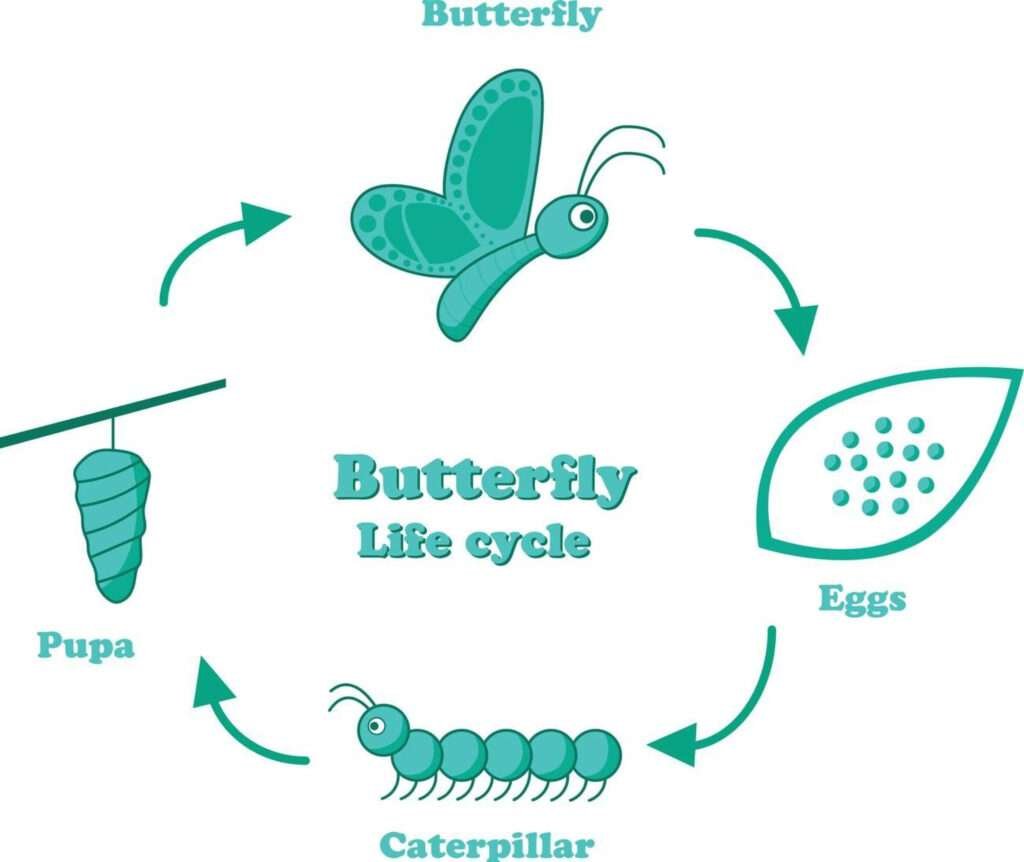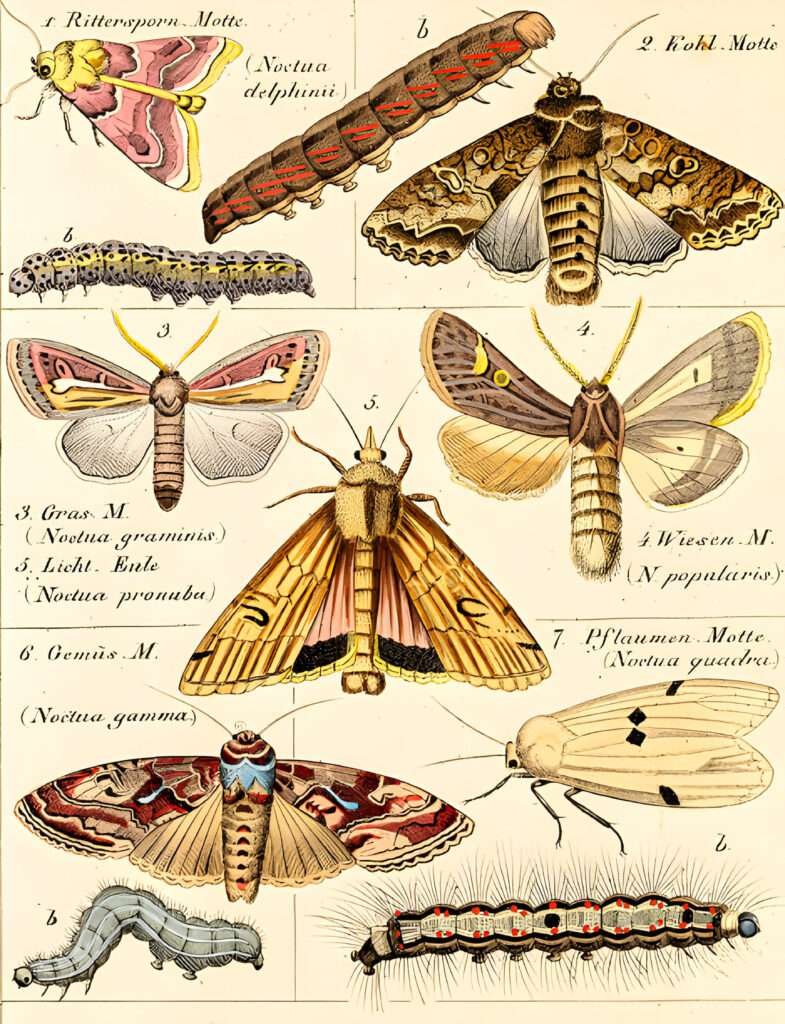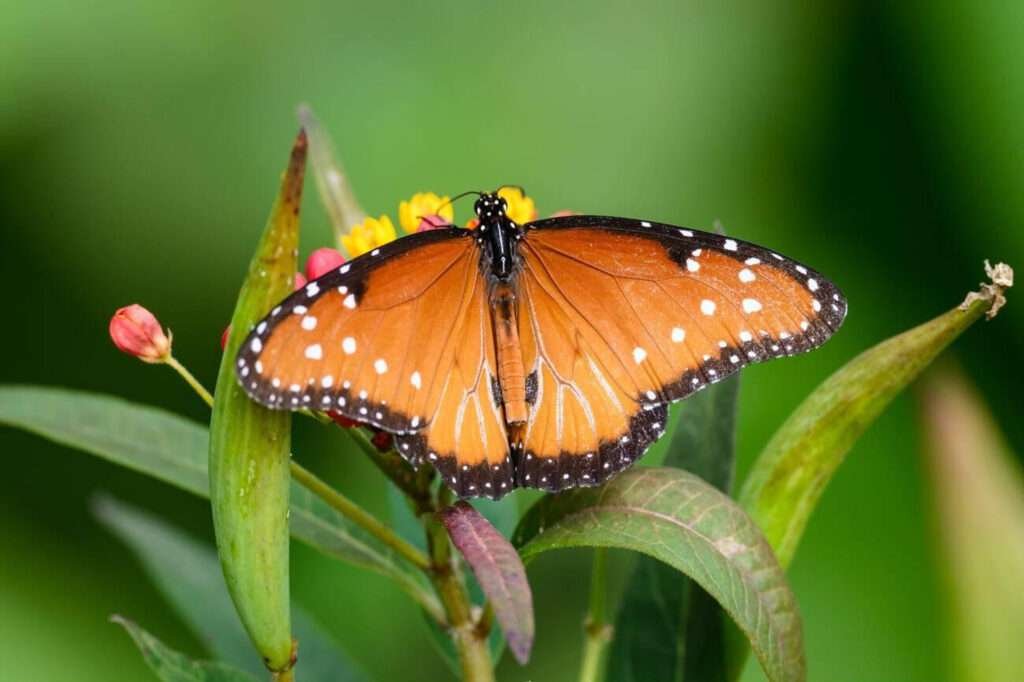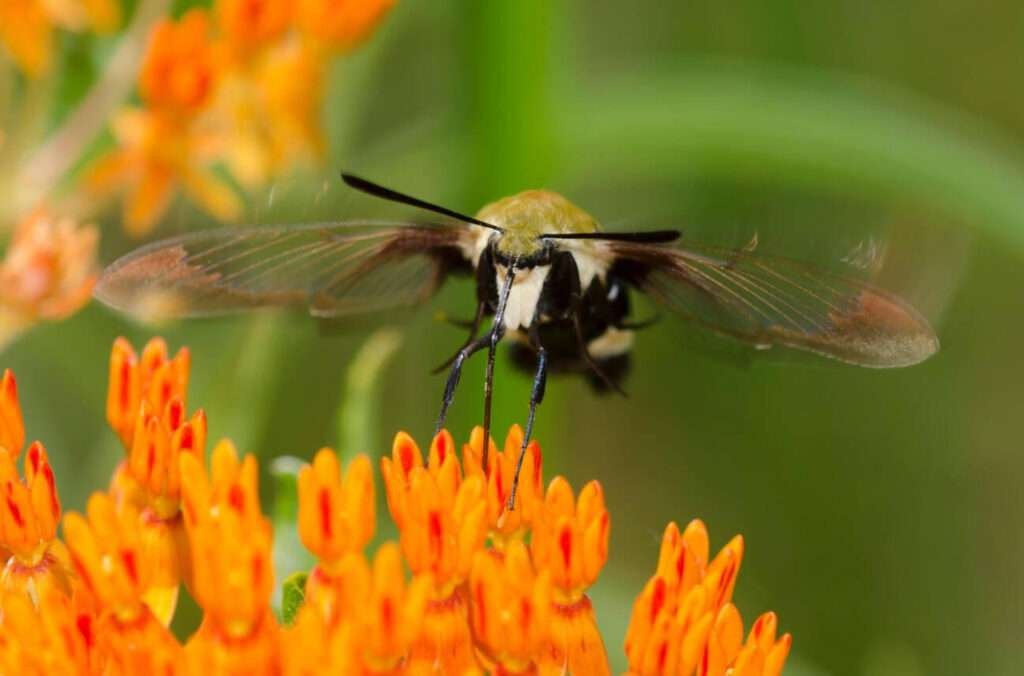Butterfly anatomy comprises three main body parts: the head, thorax, and abdomen. These insects also boast two large wings and six legs.
Discover the fascinating world of butterflies and their unique anatomical features. These delicate creatures are a marvel to observe and an intriguing subject for study due to their complex structures and life cycles. The butterfly’s head houses its sensory organs, including compound eyes for wide-range vision and antennae for detecting smells.
The thorax is the muscle hub, powering the wings for flight and the legs for navigation. Meanwhile, the abdomen contains vital internal organs, including the digestive and reproductive systems. Understanding butterfly anatomy is crucial for appreciating their role in ecosystems as pollinators and indicators of environmental health. Dive into the intricate details that make butterflies an extraordinary example of nature’s ingenuity.
The Mystique Of Butterfly Wings
Butterfly wings are nature’s canvases, dazzling with various colours and patterns. These intricate designs do more than just captivate our eyes; they’re vital for survival. Let’s unfold the secrets behind these splendid wings.
Colors And Patterns
Every butterfly wing tells a unique story through its colours. These hues are not just for show; they serve as camouflage, mate attraction, and even warnings to predators. The range of colours stems from two sources: pigments and structural colours. Pigments give strong, solid colours, while structural colours offer an iridescent quality due to light reflection.
- Camouflage: Blends with the environment.
- Mating Signals: Attracts partners with specific patterns.
- Warning Colors: Alerts predators of toxicity.
Scale Structure
Butterfly wings are covered in tiny scales, similar to tiles on a roof. These scales are pigmented and reflect light, creating the colours we see. Under a microscope, the scale structure reveals a complex arrangement that manipulates light to produce brilliant iridescence.
| Scale Feature | Function |
|---|---|
| Pigmented Scales | Provide colour through absorption and reflection of light. |
| Structural Scales | Create iridescence through microscopic structures. |
Blueprint Of Butterfly Bodies
Understanding the anatomy of butterflies provides insight into their delicate yet complex nature. These creatures are more than just colourful wings; they embody a sophisticated body structure that supports their survival and lifecycle. Let’s delve into the blueprint of butterfly bodies, examining each segment in detail.
Head
The head of a butterfly is a marvel of sensory equipment. Compound eyes, antennae, and a proboscis are key features. The eyes afford them wide-range vision. Their antennae detect smells and wind speed. They use the proboscis, a straw-like tongue, to sip nectar.
Thorax
The thorax is a butterfly’s powerhouse. It holds the muscles that move wings and six legs. Each wing attaches to a pair of muscles, which make the wings flap. Legs attached to the thorax help butterflies land and taste.
Abdomen
Butterflies’ abdomens contain vital organs. These include the heart, digestive tract, and reproductive organs. The abdomen’s segments allow it to flex when the butterfly breathes. It also stores fat for energy.
The Breathing System
Butterflies don’t have lungs. They breathe through tiny openings called spiracles. Spiracles are on the sides of their bodies. Air goes in and out of these spiracles. This is how butterflies get oxygen and release carbon dioxide.
Sensory Perceptions
Butterflies amaze us with their beautiful colours and patterns. But have you ever wondered how they experience the world around them? Let’s explore these fascinating creatures’ sensory perceptions.
Compound Eyes
Butterflies have an incredible vision system. Their eyes are made up of thousands of tiny lenses. These are called compound eyes. Each lens sees a small part of the world. Together, they create a large, mosaic picture. This helps butterflies spot predators and find food.
- Wide view: They see a 360-degree view around them.
- Colour detection: Butterflies can see ultraviolet light, which humans can’t.
- Motion detection: Quick at spotting moving objects.
Antennae Functions
The antennae on a butterfly’s head are not just for show. They are highly sensitive to touch and smell, allowing butterflies to feel and smell things that we cannot.
| Antennae Function | Description |
|---|---|
| Smell | Butterflies can smell flowers from far away. |
| Touch | They feel the air and wind, which helps them fly. |
| Navigation | Antennae help them know where to go. |
With these powerful tools, butterflies sense their world in a unique way. They can find flowers, avoid danger, and travel long distances. Their sensory perceptions are key to their survival.

Dynamics Of Flight
The dynamics of flight in butterflies are fascinating. Their wings move uniquely, allowing them to fly differently from other insects.
Wing Movement
Butterfly wings are special. They have a two-part structure connected by tiny joints. As the butterfly flaps, these parts move independently. This movement is key for their flying abilities.
- The forewings lift the butterfly.
- The hindwings help in steering.
Each flap pushes air down, lifting the butterfly up.
Flight Patterns
Butterflies show different flight patterns:
- Hovering – They can stay in one place.
- Gliding – They glide when moving down.
- Fluttering – Quick, erratic wing beats.
These patterns help them escape predators and find food.
Feeding Mechanisms
Butterflies have a unique way of eating. Unlike many other insects, butterflies drink their food. Their feeding process is fascinating and crucial for survival. Let’s explore how these delicate creatures manage to nourish themselves.
Proboscis: The Feeding Tube
The proboscis is a butterfly’s secret weapon for feeding. This long, coiled straw is tucked under their chins when not used. When it’s time to eat, the proboscis unfurls, allowing the butterfly to reach nectar deep within flowers. This tube-like structure sucks up the liquid food with impressive efficiency.
- Coiled structure for easy storage
- Unfurls to reach deep into flowers
- Suction power to drink nectar
Diet And Nutrition
A butterfly’s diet is mostly liquid. Nectar from flowers is their main source of energy. Sometimes, they may sip on fruit juices or tree sap. This sugary diet provides the necessary fuel for flight and other activities.
| Food Source | Nutrients Provided | Role in Diet |
|---|---|---|
| Nectar | Sugars and Amino Acids | Main Energy Source |
| Fruit Juice | Vitamins and Sugars | Supplementary Nutrients |
| Tree Sap | Minerals and Sugars | Occasional Treat |
Butterflies rely on a balanced diet to maintain their health. Flowers not only provide food but also a place for butterflies to rest. This relationship between butterflies and flowers is a beautiful example of nature’s harmony.
Reproduction And Lifecycle
The reproduction and lifecycle of butterflies are fascinating. These delicate insects undergo a complex process to ensure the survival of their species. From the initial mating rituals to the final transformation into a butterfly, each stage is crucial and unique.
Mating Rituals
Butterflies use a combination of visual cues and chemical signals to attract mates. The courtship dance varies among species, with some featuring aerial acrobatics and others subtle wing movements.
- Colourful displays: Males often show off bright wings to catch the female’s eye.
- Scents: Pheromones released by males draw in potential partners.
- Tactile cues: Touching antennas can signal readiness for mating.
From Caterpillar To Chrysalis
After mating, the female lays eggs that hatch into caterpillars. These little creatures eat a lot, grow quickly, and then transform.
- Egg: A tiny, often round object laid on leaves.
- Caterpillar: The larval stage where eating and growing happen.
- Chrysalis: A protective case where the caterpillar becomes a butterfly.
Inside the chrysalis, the caterpillar’s body undergoes remarkable changes. This process is called metamorphosis, and it is one of nature’s most incredible transformations.
Defence And Survival Tactics
In the world of butterflies, survival depends on clever tricks and unique body features. These beautiful creatures use various tactics to protect themselves from predators.
Camouflage
Camouflage is a key survival technique for many butterflies. Their wings often mimic the colours and patterns of their surroundings, making them hard to spot.
- Leaf mimicry: Some butterflies have wing patterns that look just like leaves.
- Bark blending: Others blend into the bark of trees.
This camouflage helps them hide from birds and other predators.
Toxicity And Mimicry
Some butterflies are poisonous, and their bright colours warn predators to stay away. This is called aposematic colouration.
| Butterfly | Type of Defense |
|---|---|
| Monarch | Toxic |
| Viceroy | Mimicry |
Non-toxic butterflies often mimic the appearance of their toxic relatives to avoid danger. This is a clever trick called mimicry.
Thermoregulation Strategies
Butterflies captivate us with their vibrant wings and graceful flight. Yet, these delicate creatures face a challenge: maintaining body temperature. Thermoregulation strategies are key to their survival. Let’s explore how butterflies keep warm and active.
Basking Behavior
As cold-blooded insects, butterflies rely on the sun. They bask in sunlight to warm their bodies. This is not just lounging; it’s a survival tactic. Their wings work as solar panels, absorbing heat efficiently.
- Wings spread wide to catch sun rays
- Body angled towards the sun for maximum exposure
- Dark colours absorb more heat
Shivering And Heat Production
When sunlight is scarce, butterflies have another trick. They shiver to generate heat. Shivering contracts their muscles rapidly, producing warmth, allowing them to fly even when it’s cool.
| Condition | Response |
|---|---|
| Cool Morning | Shivering to warm up |
| Before Flight | Quick shivers for energy |
Environmental Adaptations
Butterflies are more than just a visual treat; their anatomy is a tapestry of adaptations finely tuned to the environment. These adaptations ensure survival, aiding in everything from finding food to escaping predators. Here we’ll explore how butterflies have evolved to thrive in their specific niches through habitat preferences and climate resilience.
Habitat Preferences
Butterflies display remarkable versatility in choosing habitats. Each species prefers conditions that support optimal growth and reproduction. Their anatomy, particularly their sensory organs and wing patterns, plays a crucial role in these preferences.
- Sensory receptors on their antennae help them navigate to favourable locations.
- Wing colouration can camouflage or warn predators, depending on the habitat’s threats.
- Certain plants attract specific butterflies, influencing their habitat choice.
Climate Resilience
Butterflies have adapted to survive climate variations. Their life cycles can align with seasonal changes, ensuring they thrive in different weathers.
- Thicker scales on wings provide insulation in colder climates.
- Behavioural adaptations like basking in the sun help regulate body temperature.
- Migratory patterns enable escape from harsh conditions to more suitable environments.
Conservation Efforts
Butterflies are not just beautiful creatures; they play a crucial role in our ecosystem. Their survival is essential, yet many species face the threat of extinction. Conservation efforts are vital to protect these delicate insects and ensure they continue to thrive. Let’s explore the initiatives focused on saving butterflies.
Endangered Species
Butterflies face numerous threats, from climate change to habitat loss. Some species are now classified as endangered. Conservationists work hard to identify these species. They create plans to save them from disappearing forever.
- Monarch butterflies are well-known examples of facing challenges.
- Conservation groups list them as species of concern.
- Efforts include breeding programs and public education.
Habitat Preservation Initiatives
Protecting butterfly habitats is key to their conservation. Several initiatives focus on preserving the natural environments these species depend on.
| Initiative | Goal | Action |
|---|---|---|
| Community Gardens | Support local species | Plant native flowers and milkweed |
| National Parks | Conserve large areas | Implement butterfly-friendly practices |
| Legislation | Protect critical habitats | Enact laws restricting land use |
Organizations collaborate with landowners and governments. They aim to create corridors for migration and breeding grounds.
Frequently Asked Questions
What Is The General Anatomy Of A Butterfly?
A butterfly’s anatomy includes a head, thorax, abdomen, wings, and antennae. They possess compound eyes, proboscis for feeding, and scaled wings for flight.
What Are The Body Parts Of A Butterfly?
A butterfly’s body consists of three main parts: the head, thorax, and abdomen, along with wings and antennae.
What Is The General Structure Of A Butterfly?
A butterfly’s structure includes a head, thorax, abdomen, two antennae, compound eyes, and four wings covered in tiny scales.
What Is The Anatomy Of A Butterfly Leg?
A butterfly leg comprises five segments: coxa, trochanter, femur, tibia, and tarsus, ending in claws for gripping. These segments allow flexibility and mobility, vital for landing and climbing.
Conclusion
Understanding butterfly anatomy enriches our appreciation of these vibrant creatures and their ecological roles. Each part, from delicate wings to complex sensory organs, showcases evolution’s artistry. Let’s continue to explore and protect butterflies’ diverse beauty, ensuring their survival and our continued awe.




